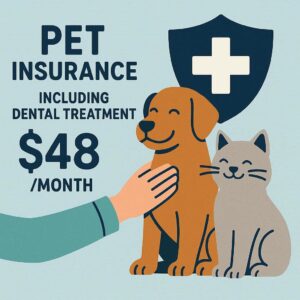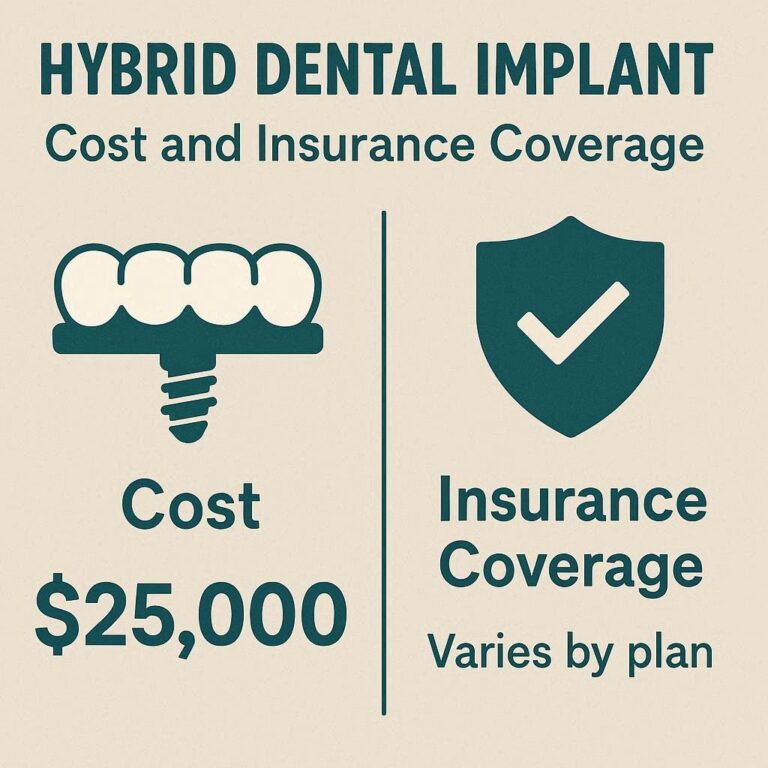A complete guide to pet insurance including dental treatment cost
The bond between a human and their pet is one of life’s most profound relationships. It is a source of unconditional love, unwavering companionship, and immeasurable joy. As pet owners, we strive to provide the very best for our furry family members—premium food, cozy beds, an abundance of toys, and, most critically, the highest standard of healthcare. Yet, in the midst of this devotion, a silent threat often lurks, one that is frequently overlooked until it becomes a crisis: the health of our pet’s mouth. Periodontal disease is the most common clinical condition occurring in adult dogs and cats, affecting over 80% of pets by the age of three. The consequences are not merely bad breath; advanced dental disease can lead to chronic pain, tooth loss, and severe systemic infections that damage the heart, liver, and kidneys.
Simultaneously, the landscape of veterinary medicine has undergone a revolutionary transformation. What was once a field limited to vaccinations and basic care has evolved into a sophisticated discipline offering advanced diagnostics, specialized surgeries, cancer treatments, and comprehensive dental procedures—all with a price tag to match. A single emergency visit for a swallowed foreign object can cost thousands of dollars, while a necessary dental cleaning with extractions can easily exceed $1,500. It is at the intersection of this advanced care and its significant financial burden that pet insurance has emerged as a critical tool for responsible pet ownership. This comprehensive guide will delve deep into the world of pet insurance, with a particular focus on the often-misunderstood realm of dental coverage. We will demystify policy language, compare coverage types, and empower you to make an informed decision to protect both your pet’s health and your financial well-being.

1. The Unseen Epidemic: Why Pet Dental Health is Non-Negotiable
Many pet owners operate under the assumption that a pet’s bad breath, or “halitosis,” is simply a normal, if unpleasant, characteristic of animal ownership. This misconception is the primary reason dental disease progresses to a critical stage. The process begins subtly. After a meal, a soft, sticky film of bacteria called plaque forms on the teeth. If not removed within about 24-48 hours, this plaque mineralizes into a hard, crusty deposit known as tartar or calculus. Tartar provides a rough surface that allows more plaque to accumulate, creating a vicious cycle. As the bacteria multiply below the gumline, they trigger an inflammatory response from the body, a condition known as gingivitis. This is characterized by red, swollen, and bleeding gums.
If left unchecked, gingivitis evolves into periodontitis, a severe and irreversible destruction of the tissues that support the tooth—the gums, periodontal ligament, and alveolar bone. The body’s own immune system, in its attempt to fight the infection, begins to break down these structural tissues. This leads to painful abscesses, loose teeth, and ultimately, tooth loss. However, the danger does not remain confined to the oral cavity. The same bacteria causing periodontitis can enter the bloodstream through the inflamed gum tissue, a process known as bacteremia. These bacteria then travel throughout the body, lodging in major organs. The resulting inflammation can cause endocarditis (infection of the heart valves), hepatitis (liver inflammation), and glomerulonephritis (kidney damage). The chronic pain associated with dental disease also significantly impacts a pet’s quality of life, leading to irritability, reluctance to eat, and a general decrease in activity and happiness. Therefore, maintaining your pet’s dental health is not a cosmetic luxury; it is a fundamental component of their overall systemic health and longevity.
2. The Financial Bite of Veterinary Care: Understanding the Cost of Modern Medicine
The advancement of veterinary medicine is a double-edged sword. While we now have access to life-saving and life-enhancing treatments that were unimaginable a generation ago, these services come at a cost that reflects their complexity. Veterinary clinics are small businesses that must cover significant overhead, including advanced medical equipment (digital X-rays, ultrasound machines, in-house laboratories), highly trained staff (veterinarians, licensed veterinary technicians, support staff), pharmaceuticals, and facility maintenance. A routine dental cleaning for a pet is not a simple brushing; it is a professional procedure performed under general anesthesia, which is essential for a thorough cleaning below the gumline and for the safety and comfort of the animal.
This procedure involves:
-
Pre-anesthetic blood work: To ensure the pet is healthy enough for anesthesia.
-
General anesthesia and monitoring: Administered by a veterinarian and monitored by a dedicated technician throughout the procedure.
-
Scaling: Using ultrasonic and hand scalers to remove plaque and tartar from both above and below the gumline.
-
Polishing: Smoothing the tooth surface to delay future plaque accumulation.
-
Full-mouth dental radiographs (X-rays): Absolutely critical for assessing the health of the tooth roots and jawbone below the gumline, where 60% of the tooth structure resides.
-
Fluid therapy: To maintain blood pressure and support organ function during anesthesia.
If problems are identified during the exam or on X-rays, additional costs accrue rapidly. A single tooth extraction can range from $150 to $600 or more, depending on the tooth’s size and root complexity. A root canal for a fractured but salvageable tooth can cost between $1,500 and $3,000. Emergency care is even more costly. Treatment for a fractured jaw from trauma can cost $2,000 to $5,000, and surgery to remove a foreign object from the intestines can range from $3,000 to $8,000. For many families, these unexpected expenses present a heartbreaking financial dilemma, forcing them to make impossible choices between their pet’s life and their financial stability.
3. Pet Insurance 101: How It Works and Why It’s More Than a Luxury
Pet insurance functions on a model of reimbursement, fundamentally different from human health insurance. Instead of the insurance company paying the veterinarian directly, the pet owner pays the veterinary bill in full at the time of service. The owner then submits a claim to the insurance company, along with the itemized invoice and medical records from the visit. The insurer reviews the claim and, if approved, reimburses the owner for the covered amount based on their specific policy terms. This model emphasizes the importance of understanding your policy’s details, as the out-of-pocket expense at the vet’s office remains your immediate responsibility.
The core value of pet insurance is not in covering predictable, routine costs, but in providing a financial safety net for the unexpected and often catastrophic veterinary expenses that can arise from accidents and illnesses. It transforms a potential financial crisis into a manageable reimbursement process. By paying a predictable monthly or annual premium, you are effectively transferring the risk of a large, unforeseen veterinary bill from your personal savings to the insurance company. This provides unparalleled peace of mind, ensuring that in a moment of medical crisis for your beloved pet, your decision can be based solely on what is medically best for them, rather than what you can afford. It empowers you to say “yes” to recommended treatments without the paralyzing fear of financial ruin.
4. Decoding Dental Coverage: The Fine Print You Must Read
This is the most critical section for any pet owner concerned about dental costs. Not all pet insurance is created equal, and dental coverage is where policies vary most dramatically. Understanding these distinctions is paramount.
Accident-Only Dental Coverage
This is the most basic level of dental coverage. It typically covers injuries to the teeth, mouth, or jaw caused by a specific, external accident. Examples include:
-
A tooth fractured from chewing on a hard object like a rock or antler.
-
A laceration to the tongue or gums from a sharp object.
-
A jaw fracture resulting from a fall or trauma.
Crucially, it does not cover any treatment for disease. This means the costs associated with periodontal disease—gingivitis, periodontitis, tooth extractions due to decay, stomatitis, or routine cleanings—are excluded. An accident-only policy would cover repairing the broken tooth from chewing a rock, but it would not cover the extraction of a tooth that is loose and infected due to advanced periodontal disease.
Comprehensive Illness Dental Coverage
This is a more robust level of coverage typically found in higher-tier accident and illness policies. It covers dental treatments that are necessary due to illness, not just accidents. This can include:
-
Treatment for periodontal disease (gingivitis and periodontitis).
-
Tooth extractions deemed medically necessary due to disease.
-
Treatment for oral infections like stomatitis.
-
Treatment for oral masses or tumors.
However, there are often significant caveats. Many policies with “comprehensive” illness dental coverage still exclude routine and preventive care, such as professional cleanings (prophylaxis), brushing, and fluoride treatments. Furthermore, some policies may require that the pet has received a professional dental cleaning within the 12 months prior to the policy’s effective date to be eligible for illness-related dental coverage, or they may impose a waiting period for dental illness claims (e.g., 6-12 months). It is essential to read the sample policy documents carefully to understand these stipulations.
Wellness Add-Ons for Preventive Care
To cover the gaps in standard accident and illness policies for routine care, many insurers offer optional “wellness” or “routine care” riders for an additional monthly fee. These are not insurance in the traditional sense but rather pre-paid plans for predictable veterinary expenses. A wellness add-on typically covers, up to a specified annual limit, costs such as:
-
Annual health exams.
-
Vaccinations and titer tests.
-
Heartworm and flea/tick prevention.
-
Routine dental cleanings.
For a pet owner who is diligent about preventive care, a wellness add-on can be a valuable tool for budgeting. It allows you to spread the cost of a known expense (like an annual cleaning) over monthly payments, and when combined with a comprehensive illness policy, it creates a more holistic safety net for both unexpected illnesses and planned preventive care.
5. A Deep Dive into Key Policy Components
Beyond the type of coverage, several other factors determine the cost and value of a pet insurance policy.
-
Premiums, Deductibles, and Reimbursement Models: The premium is the amount you pay periodically (monthly or annually) to keep the policy active. The deductible is the amount you must pay out-of-pocket each year before the insurance starts reimbursing you. The reimbursement level is the percentage of the covered bill the insurer will pay after your deductible is met (e.g., 70%, 80%, 90%). Finally, the annual payout limit is the maximum amount the insurer will pay for covered claims in a policy year. These four levers work together. Choosing a higher deductible or a lower reimbursement level will lower your monthly premium, but it will also increase your out-of-pocket costs when you file a claim.
-
Annual Payouts and Lifetime Limits: Policies can have annual limits (resetting each year) or per-incident limits (a cap on a specific condition). The most comprehensive policies offer “unlimited” annual payouts, meaning there is no cap on what they will cover for eligible expenses in a given year, providing the highest level of protection.
-
Pre-Existing Condition Clauses: This is arguably the most important exclusion in any pet insurance policy. A pre-existing condition is any illness or injury that showed symptoms before your policy’s effective date or during the waiting period. These conditions are permanently excluded from coverage. This is why enrolling your pet when they are young and healthy is strongly advised, as it minimizes the chance of any conditions being deemed pre-existing. Some providers may “cure” a pre-existing condition if it has been symptom- and treatment-free for a specified period (e.g., 12 months), but this typically applies only to curable conditions, not chronic issues like allergies or arthritis.
6. Evaluating the Top Pet Insurance Providers: A Comparative Analysis
The following table provides a high-level comparison of how several leading providers handle dental coverage. It is imperative to verify all details directly with the provider, as policy terms can change.
Dental Coverage Comparison of Leading Pet Insurance Providers
| Provider | Accident-Only Dental Coverage | Comprehensive Illness Dental Coverage | Routine Dental Cleaning Coverage | Key Dental-Related Notes |
|---|---|---|---|---|
| Provider A | Yes (e.g., broken tooth) | Yes (e.g., periodontal disease) | Available via Wellness Add-on | May have a 6-month waiting period for dental illness. Covers tooth extractions if medically necessary. |
| Provider B | Yes | Yes | Available via Wellness Add-on | Requires a veterinary dental exam in the last 12 months for full dental coverage to apply. |
| Provider C | Yes | Limited or Excluded | Available via Wellness Add-on | Often excludes treatment for periodontal disease. Focus is on accidental injuries. |
| Provider D | Yes | Yes | Available via Wellness Add-on | Offers “unlimited” annual payout options. Covers dental injuries and illnesses as standard. |
Note: This is a illustrative comparison. Provider names and specific terms are hypothetical for the purpose of this example. Real-world research is essential.
7. The Claims Process Demystified: From Vet Visit to Reimbursement
Understanding the claims process can alleviate much of the stress associated with using your insurance.
-
Visit the Vet: Take your pet for treatment and pay the bill in full. Request a detailed, itemized invoice and the complete medical records from that visit.
-
Submit the Claim: Log into your insurer’s online portal or mobile app. Complete the claim form, and upload clear, legible copies of the invoice and medical records. Most companies have streamlined this digital process.
-
Claim Review: The insurance company’s claims team will review your submission. They will check that the condition is covered, that it is not related to a pre-existing issue, and that the treatments are eligible under your plan. This process can take from a few days to a couple of weeks.
-
Explanation of Benefits (EOB) and Reimbursement: Once approved, you will receive an EOB detailing what was covered, any deductions applied (like your deductible), and the final reimbursement calculation. The payment is then typically issued via direct deposit or check.
8. Beyond Insurance: Proactive Strategies for Your Pet’s Oral Health
While insurance is a powerful financial tool, it is not a substitute for proactive, at-home care. The best strategy is a multi-faceted approach to minimize the need for expensive dental procedures in the first place.
-
Daily Tooth Brushing: This is the gold standard. Using a pet-specific toothpaste (never human toothpaste, which can be toxic), brushing daily is the single most effective way to remove plaque before it turns into tartar.
-
Dental Diets and Chews: Specially formulated kibble designed to have a mechanical cleaning action and veterinary-approved dental chews can help reduce plaque and tartar buildup. Look for products accepted by the Veterinary Oral Health Council (VOHC).
-
Water Additives and Oral Gels: These products can help reduce bacteria in the mouth and are a useful supplement to other care methods.
-
Regular Veterinary Check-ups: Your veterinarian will perform an oral exam during your pet’s annual wellness visit and can identify early signs of dental disease, allowing for intervention before it becomes severe.
-
Professional Cleanings: Adhere to your veterinarian’s recommended schedule for professional dental cleanings under anesthesia. These are non-negotiable for maintaining long-term oral health.
9. Conclusion: An Investment in Peace of Mind and Partnership
Pet insurance that includes comprehensive dental coverage is not merely a product; it is a strategic component of modern, responsible pet ownership. It empowers you to make healthcare decisions based on love and medical advice, not fear and financial constraints. By understanding the nuances of policies, particularly regarding dental care, and combining that coverage with diligent at-home oral hygiene, you create a powerful partnership for safeguarding your pet’s health. This investment secures more than just financial resources; it secures the promise of a healthier, happier, and longer life alongside your cherished companion.
10. Frequently Asked Questions (FAQs)
Q1: At what age should I enroll my pet in insurance?
A: The ideal time to enroll is when your pet is a young, healthy puppy or kitten. This ensures that any future conditions will not be classified as pre-existing, giving you the most comprehensive coverage possible.
Q2: Are hereditary or breed-specific conditions covered?
A: Most comprehensive accident and illness policies do cover hereditary and congenital conditions, provided they are not pre-existing. However, some lower-cost policies may exclude them, so it’s crucial to check the policy wording.
Q3: How do I know if a dental procedure will be considered “cosmetic” vs. “medically necessary”?
A: Insurance covers procedures that are medically necessary. A tooth extraction due to severe infection or a fractured tooth causing pain is medically necessary. A procedure like “teeth cleaning” for aesthetic reasons without underlying disease would be considered cosmetic and is not covered unless under a wellness plan.
Q4: Can I use any veterinarian I want?
A: Yes, virtually all pet insurance companies in the U.S. and Canada are provider-agnostic. You can visit any licensed veterinarian, specialist, or emergency animal hospital.
Q5: What is typically NOT covered by pet insurance, even with a good policy?
A: Common exclusions include pre-existing conditions, cosmetic procedures, breeding costs, and the cost of grooming or dietary food unless prescribed for a specific, covered condition.
Date: November 17, 2025
Author: The Pet Wellness Institute
Disclaimer: The information provided in this article is for educational and informational purposes only and does not constitute professional veterinary, medical, or financial advice. Always consult with a licensed veterinarian for any health concerns regarding your pet and with a qualified financial advisor for insurance-related decisions. Product and service details are subject to change; always verify terms directly with providers.


